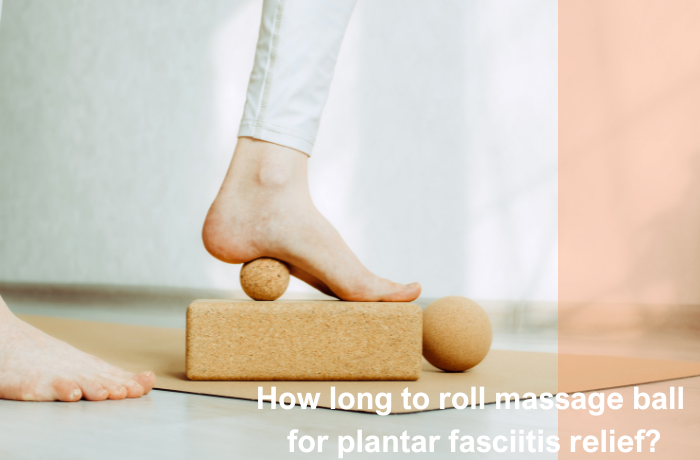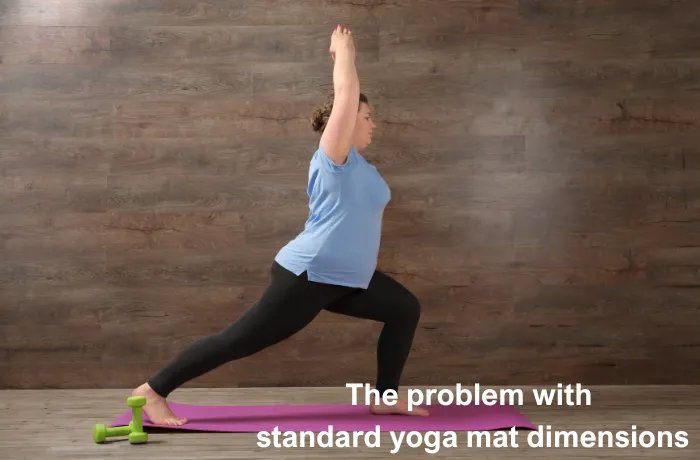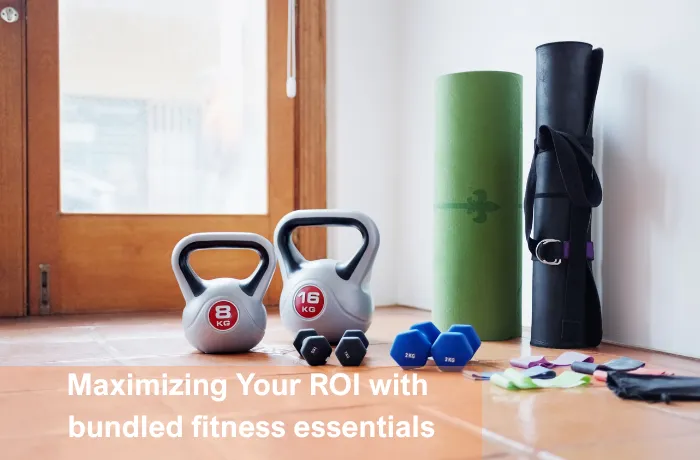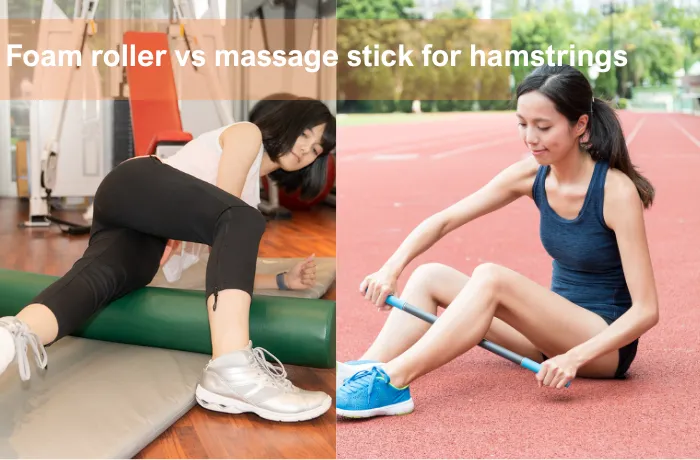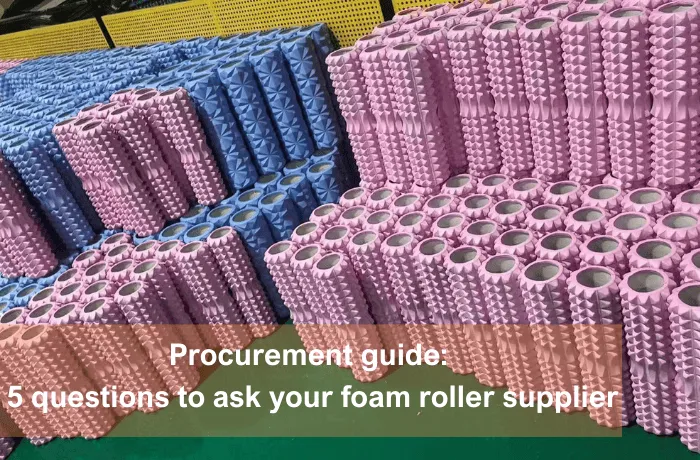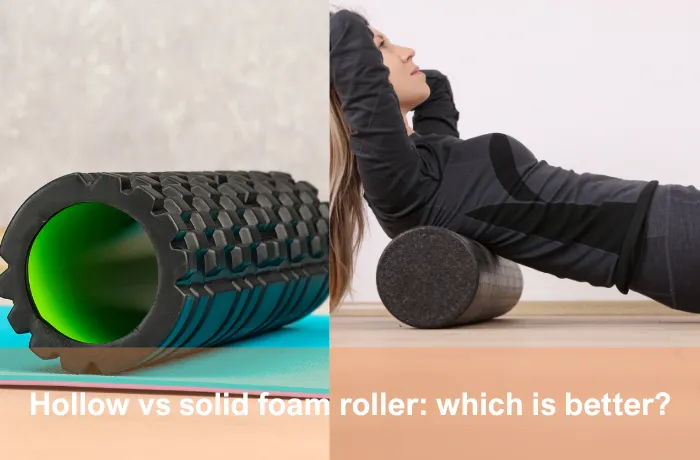You should roll a massage ball under your foot for about 3–5 minutes, two or three times each day. This timing helps many people with plantar fasciitis find relief from pain. A clinical study showed that using a massage ball at home for this length of time can support your self massage routine. Always use gentle pressure. If you feel pain or tingling, stop right away to protect your foot from injury. Rolling helps loosen tight muscles and eases pain caused by plantar fasciitis.
Key Takeaways
- Roll a massage ball under each foot for 3 to 5 minutes. Do this two or three times each day to help with plantar fasciitis pain.
- Use light pressure and stop right away if you feel sharp pain. Stop if you feel tingling or burning so you do not get hurt.
- Roll the arch and heel slowly. Pause on sore spots to help relax tight areas and help blood flow better.
- Pick a ball that feels good, like a tennis ball or golf ball. Change how firm the ball is to fit what you need.
- Use the massage ball along with stretching, good shoes, and rest. This will give you the best relief over time.
Massage Ball Duration for Plantar Fasciitis
How Long to Roll Each Foot?
You might ask how long to use a tennis ball for plantar fasciitis. Most doctors say to roll a massage ball under each foot for 3 to 5 minutes. This short time helps break up tight spots and lowers pain in the plantar fascia. When you use a massage ball, you stretch and rub the tissue under your foot. This helps more blood flow and helps your body heal. You can also stop for 20 to 30 seconds on sore spots to help them relax. This way works well for heel pain and is easy to do at home.
Tip: Use light pressure and do not press too hard. You want to feel better, not hurt more.
Here is a table that compares common self massage methods for plantar fasciitis:
| Technique | Recommended Duration | Notes on Pressure/Use |
|---|---|---|
| Massage Ball | 20-30 seconds on sore spots | Roll your foot over the ball, stop on sore spots to help them relax; easy to use any time |
| Thumb Presses on Trigger Points | 30-60 seconds hold | Press down until the knot feels softer; hold longer than with the massage ball |
| Foam Rolling (Calves) | 20-30 seconds on sore spots | Pause for the same time as the massage ball; works on calves to help your feet |
| Ice Massage (Frozen Bottle) | 5-10 minutes | Takes longer but uses cold to help pain |
You can see the massage ball method is fast and easy. It fits into your day and gives you a simple way to help plantar fasciitis pain.
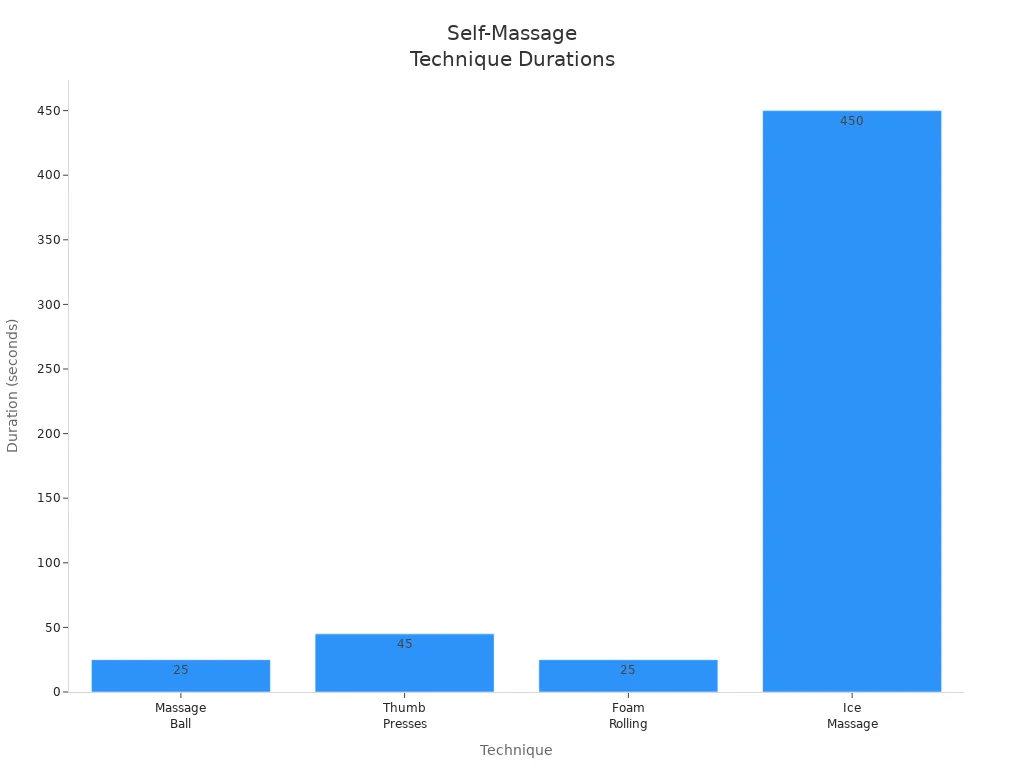
How Often to Use?
For best results, use the massage ball two or three times a day. You can roll your foot while sitting, watching TV, or after exercise. Doing this often keeps your plantar fascia loose and less likely to get sore. If your heel hurts a lot, you may want to use the massage ball more, but always pay attention to your body. Some people find that 30 to 60 seconds at a time, repeated as needed, helps. Doing it often is important for plantar fasciitis relief.
Rolling the massage ball often can:
- Help pain by loosening tight spots.
- Make blood flow better and help your foot heal.
- Make your foot more flexible and stop future injury.
- Calm your nerves and help you feel relaxed.
Signs to Stop or Adjust
Always notice how your foot feels during and after using a massage ball. If you feel sharp pain, tingling, or burning, stop right away. These signs mean you may be pressing too hard or rolling too long. Using a massage ball too much or with too much force can make plantar fasciitis worse. You might feel more pain or even get swelling. If you see redness, swelling, or feel strong pain, take a break and let your foot rest.
- Do not use the massage ball if you have an infection, open cut, or think you tore your plantar fascia.
- Do not massage right before hard exercise, as this can make your muscles weak and raise your chance of getting hurt.
- Use slow, gentle moves for the best results.
Note: Gentle massage is best for plantar fasciitis. Hard or deep massage can make pain and swelling worse, especially when the problem is new.
If you follow these tips, you can use a massage ball safely and well for heel pain and plantar fasciitis. Doing gentle self massage at home often helps you get better and stay active.
How to Use a Massage Ball?
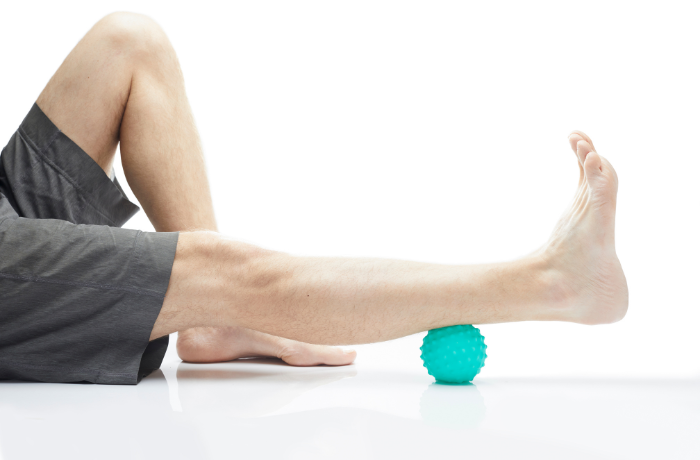
Foot Positioning and Pressure
You can start self massage for plantar fasciitis by sitting in a sturdy chair. Place your feet flat on the floor and keep your back straight. Put the ball under the arch of your foot. Make sure your toes point forward. Press your foot down gently. Use your body weight to control the pressure. You should feel some pressure, but not sharp pain. If you feel pain or tingling, stop right away. Massaging the feet should never cause discomfort. You can adjust the pressure by lifting your foot or pressing down less. This helps you release tension in the plantar fascia without making foot pain worse.
Tip: Always listen to your body. If you feel pain, reduce the pressure or take a break.
Rolling Technique for Relief
Rolling on a lacrosse ball or tennis ball works well for plantar fasciitis. You can easily perform this self-massage at home. Start by placing the ball under your arch. Roll the ball slowly from your toes to your heel and back. Move the ball in small circles or straight lines. Focus on the arch and heel, where pain often starts. If you find a sore spot, pause and hold gentle pressure for a few seconds. This helps release tension and break up tight spots. Spend about 3 to 5 minutes on each foot. Repeat this self massage two or three times a day. Rolling a tennis ball or lacrosse ball helps stretch the plantar fascia and can bring relief.
Note: Avoid rolling too fast or pressing too hard. Gentle, steady movements work best for self-massage and help prevent more pain.
You can use this method as part of your daily routine. Many people find that massaging the feet in the morning and evening helps reduce pain from plantar fasciitis. This technique is safe, simple, and easily performed at home.
Choosing a Foot Mobility Ball

Tennis Ball Massage vs. Other Balls
There are many balls you can use for plantar fasciitis. Tennis ball massage is a favorite because it is soft and easy to get. It feels gentle on your foot. Some studies show a frozen tennis ball can help with pain. This method can make your foot work better and ease heel pain at home. You can control how hard you press with tennis ball massage. But do not push too hard. Too much pressure can make plantar fasciitis worse.
The plantar fasciitis golf ball massage technique gives a stronger massage. The small, hard golf ball can reach deep sore spots. Many people say the plantar fasciitis golf ball massage technique helps them move better and play sports again. The plantar fasciitis golf ball massage technique also helps blood flow and lowers swelling. If you want a deeper massage, try the plantar fasciitis golf ball massage technique. You can use both tennis ball massage and the plantar fasciitis golf ball massage technique to see which one helps you more.
You can also try spiky balls, lacrosse balls, or special foot mobility balls. Spiky balls give a deep massage and wake up your nerves. Lacrosse balls are harder than tennis balls and help break up knots. The plantar fasciitis golf ball massage technique and tennis ball massage are easy to add to your daily routine.
What to Look For?
When picking a ball for foot massage, think about size, firmness, and what it is made of. Small balls, like those in the plantar fasciitis golf ball massage technique or tennis ball massage, work best for the plantar fascia. Bigger balls cover more space but may not reach deep.
| Size | Material | Best Use |
|---|---|---|
| Small (1.75″) | Rubber, silicone | Target plantar fascia, deep tissue massage |
| Medium (2.5″) | Foam, cork | Gentle massage, sensitive feet |
| Large (5″) | EVA foam | Broad muscle groups, less pressure |
How firm the ball is matters. Rubber or silicone balls press harder and help with tight spots. Foam balls are softer and good for beginners. Spiky balls give a strong massage but can hurt if you press too much. Always start with light pressure and go slow.
Pick a foot mobility ball that feels good in your hand, has a bumpy surface, and is made to last. If it is easy to carry, you can use it anywhere. The right ball for foot massage helps your plantar fasciitis routine and keeps you moving.
Tip: Try both tennis ball massage and the plantar fasciitis golf ball massage technique to see which one feels best for your plantar fasciitis.
Maximizing Plantar Fasciitis Relief
Common Mistakes
You want your massage ball routine to work well for plantar fasciitis. Some people make mistakes that slow healing or make pain worse. Here are mistakes you should try to avoid:
- Skipping sore spots. You might not want to touch painful areas, but these spots need gentle pressure to help them feel better.
- Using not enough pressure. The plantar fascia is strong. You need to press firmly, but it should still feel okay.
- Forgetting important spots. Remember to roll your heel and toes. These places are key for lasting relief.
- Rolling too much. If you use the massage ball too long, it can hurt your foot and make pain worse. Keep sessions short and listen to your body.
- Not changing how hard you press. Start soft and only press harder if it feels good.
Tip: If you feel sharp pain or tingling, stop right away. Your body will let you know when to rest.
Combining with Other Treatments
You can help plantar fasciitis by using a massage ball and other treatments together. Massage balls break up tight spots and help blood flow, which can lower swelling and pain. Stretching your feet, calves, and Achilles tendon makes you more flexible and helps you heal. Doing both gives you quick pain relief and helps you feel better for longer.
Try these ideas at home:
- Stretch your feet and calves often.
- Wear shoes that support your arches and have soft padding.
- Use orthotic inserts if you need more support.
- Put ice packs on your foot for 15-20 minutes to help with swelling and pain.
- Take breaks if you stand or walk for a long time.
- Keep a healthy weight to take pressure off your feet.
- Wear night splints to stretch your plantar fascia while you sleep.
Physical therapy, acupuncture, and shockwave therapy can also help if you do not get better. These treatments, along with using a massage ball, can help you feel less pain and take care of your feet.
You can manage plantar fasciitis by rolling a massage ball for 3–5 minutes per foot, two or three times daily. Use gentle pressure and stay consistent for the best results. Regular massage helps stretch the plantar fascia, boosts blood flow, and eases pain. This method is easy to use at home and works well with other treatments.
Always listen to your body. Adjust your routine if you feel pain or tingling.
If plantar fasciitis pain does not improve, follow these steps:
- See a healthcare provider if pain lasts several weeks.
- Get help if pain gets worse or stops you from daily activities.
- Remember, self-care is helpful but does not replace a doctor’s advice.
FAQ
How hard should you press when rolling a massage ball?
You should use gentle pressure. You want to feel a mild stretch or massage, not pain. If you feel sharp pain or tingling, lighten your touch or stop. Your comfort guides the right amount of pressure.
Can you use a massage ball if your foot feels swollen?
You can use a massage ball with mild swelling, but stop if swelling increases or pain gets worse. If you see redness or severe swelling, rest your foot and talk to a doctor before using the ball again.
What time of day works best for massage ball rolling?
Many people find relief by rolling in the morning and before bed. You can also use the massage ball after activity. Try different times to see when your feet feel best.
Do you need to use a special massage ball for plantar fasciitis?
You do not need a special ball. Tennis balls, lacrosse balls, or golf balls all work. Pick one that feels comfortable and fits your foot. Some people like spiky balls for deeper massage.

